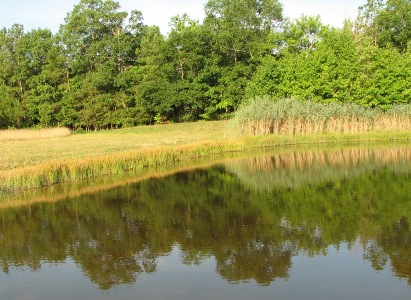Across North America, landowners have a variety of choices when it comes to stocking private ponds with fish. Types of freshwater fish suitable for pond stocking include bass, sunfish, catfish, freshwater trout and many others.
When choosing which species of fish to stock in a pond, owners typically take into consideration their overall goals for the project. In many cases, fishing is a priority for landowners.
In all but the coldest regions, members of the bass and sunfish family are popular with pond owners. These include largemouth and smallmouth bass, rock bass, crappie, bluegill, redear (shellcrackers), pumpkinseed, green sunfish or other species.
In addition to bass and sunfish, some land owners choose to stock other freshwater species such as rainbow trout, bullheads, channel catfish, pickerel, yellow perch, grass carp, shad, suckers or others.
Each species can have impacts on the overall success of the pond. A few species, such as largemouth bass and bluegill are known to co-exist successfully. Others can fail when placed in the same body of water.
Typically, pond owners stock one or more top level predators, such as bass, crappie, channel catfish or pickerel, accompanied by a variety of forage species upon which larger fish can feed on.
Before stocking a private pond, most owners consult pond fish books for ideas on which fish species to include. State or provincial fish and game departments may also offer information concerning pond stocking. Many of these resources can save pond owners time, money and frustration.
In addition to stocking fish for sport or table fare, pond owners often choose to add a variety of plants and wildlife. A variety of aquatic plants are introduced into private ponds. Aquatic plants can provide shelter for fish and other pond life, food for waterfowl, or simply add to pond aesthetics.
In many areas, mosquitofish are essential additions to even the smallest of ponds. These tiny fish eat insect larvae in great quantities and can be extremely effective for mosquito control.
When aquatic plants become a nuisance, some pond owners add species of fish that are intended specifically to reduce plant life. Grass carp are both known for their ability to devour and reduce submerged aquatic plants.
Crayfish are another possibility for pond stocking. Like carp, they devour aquatic vegetation, stirring up silt in the process. In some applications, they become forage for large fish and their tendency to hamper water clarity is kept in balance.
Although they have a host of benefits, some species of crayfish are not suitable for stocking in ponds where water clarity and fish production are prime goals.
